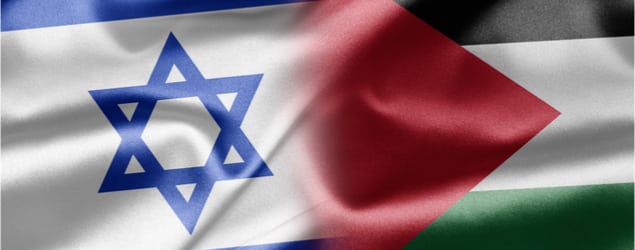Why Journalists Get the Israeli/Palestinian Conflict Wrong

Imagine you’re a foreign journalist in Israel, and one day, visiting Al-Quds University in East Jerusalem, you observe this scene: men clad all in black stand in military formation, lifting their right arms in a Nazi-style salute. They stand with their boots on Israeli flags, draped on the ground. Nearby, actors play dead Israeli soldiers. Behind the first formation, another row of men carry banners of Palestinian Islamic Jihad. The rally, in support of that jihadist group, draws hundreds of university students. Some of them return the Nazi-style salute. Al-Quds University, a mainstream institution, has had partnerships with Brandeis and Bard Universities.
Is there a story to be written about this rally? Obviously.
But this story, and many others like it, routinely go unwritten, or else are spiked by editors of such major news agencies as the AP, whose reports feed many publications. Or consider the Gaza war last summer. Did you notice that there were hardly any photos of Hamas fighters and their rocket emplacements? That’s peculiar, considering the number of rockets they launched.
The articles about the Israeli/Palestinian conflict that do get published have a disquieting uniformity. Typically, those articles echo to a well-worn theme of Palestinian victimhood and Israeli aggression — despite abundant countervailing facts, such as the PIJ rally described above. What explains such bizarre editorial choices?
Matti Friedman, who worked for the AP as a reporter and editor in Jerusalem, witnessed from the inside how journalists approach the Israeli/Palestinian conflict. In two illuminating articles — published in The Atlantic and Tablet Magazine — he explores different facets of the problem. In the latest episode of the podcast, I interview Matti about his experience, and you can hear the recording below.









